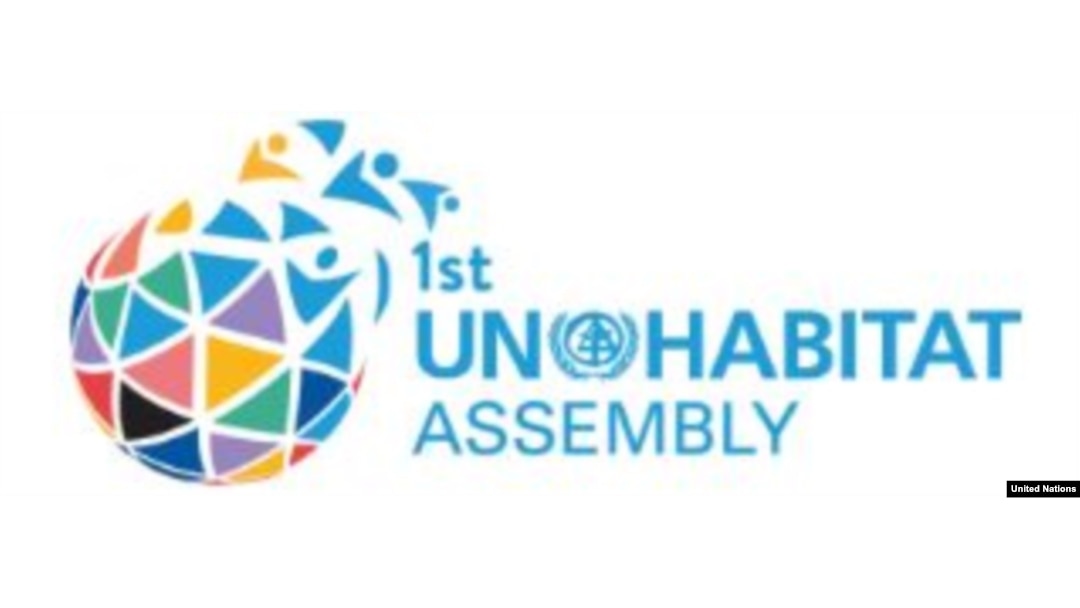Vamsi Gaddam tapped on a model solar-roofed house, an innovation he said would help deal with the global urban housing crisis.
"Here we have the first of its kind solar roof, wherein the solar components are infused into the roofing products, so it is one single roof which generates power," said Gaddam, managing director of Visaka Industries in India. "And the life of the roof itself is 50 years and the solar part of it is 25 years, so we are outlasting the life of a general solar panel, whereby a roof makes more sense for you in the long run."

The U.N. Habitat Assembly logo.
Gaddam was one of nearly 3,000 delegates who attended the Habitat Assembly, a conference on how to best improve urban housing. At the five-day meeting, which ended Friday, the United Nations warned that without smart housing, Africa risked an urban crisis.
Affordability is key and Gaddam said his model house, made partially with improvised cement board, a substitute for wood, would cost only $6,000 to build.
Across from him, Belgian professor Dr. Michel Loots, chief executive officer of Trideal House, took us on a tour of his company's triangular house with hanging gardens.
Loots said his model featured smart urban technology that tackles 12 of the 17 sustainable development goals in the U.N. blueprint for ending poverty and ensuring equality globally.
"We invented a kind of house which is in fact a food- and income-producing house," he said. "The house is built on extremely durable water tanks that collect water during the rainy season and then give enough water in order to grow vegetables and fruits that they need throughout the year."
Loots has already signed an agreement with the Ethiopian government to bring it to the industrial phase, with the hope of adapting the technology in the East African country.

